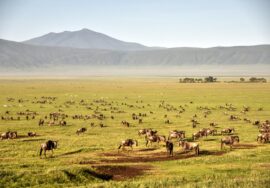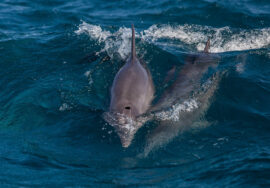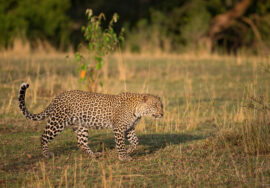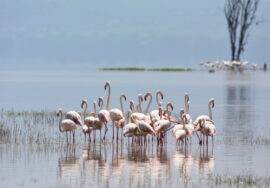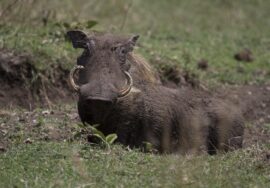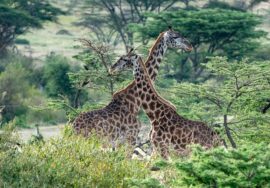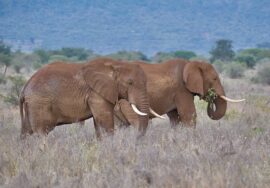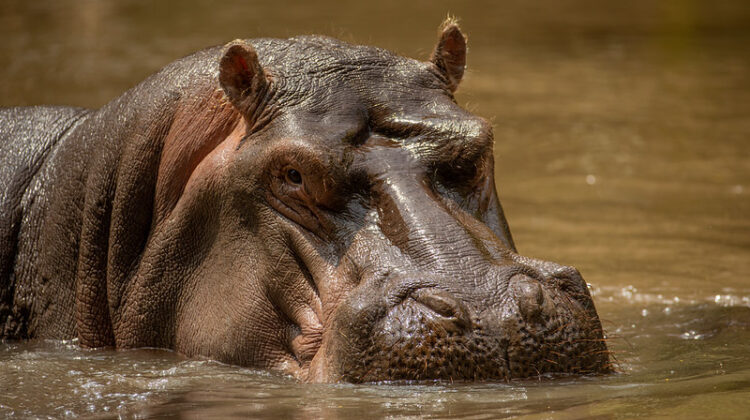
MERU NATIONAL PARK
Meru National Park covers 340 square miles.
History
Between 2000 and 2005, people were most interested in making Meru National Park a reality. Meru National Park has been fixed up and turned back into the great game park it is now thanks to money from the International Fund for Animal Welfare. Since 2005, the park has been a part of the “Lion Conservation Unit.”
Fees and permits to get in
Meru National Park costs USD52 for adults and USD35 for kids under 12 years old. The fee is good for 24 hours.
When they are open
The gates to Meru National Park are open every day from 6 a.m. to 6 p.m.
How to Get There
By Road
Meru National Park is about 220 miles northeast of Nairobi. It takes six hours to drive there on the Nairobi Highway (A2) and the Nairobi-Meru Highway (B6). The main gate is called Murera Gate, and the other is called Ura Gate.
By Air
It will take about 65 minutes to fly from Nairobi’s Wilson Airport, which is 216 miles away.
Best Time to Visit
Climate and weather
Most of the year, temperatures in Meru National Park reach up to 90 F, which is pretty cool. November is the driest month. The best times to see wildlife are in June, July, and August, when it is dry and cool. March is the hottest month, and May has the most sunshine.
Staying away from crowds
You might want to visit Meru National Park right before or right after the busy, cool, and dry season, which lasts from late June through early September. Between October and early November is a great time to visit Meru National Park because there are fewer people and cars on the grassland. In May and early June, there is light, cooler weather, and fewer people.
Good Value for Money
There are many places to stay, from comfortable camps that cost USD270 per person per night to high-end hotels that cost USD750 to USD1400 per person sharing per night. Without as many people and cars in the park, Meru National Park provides a truly untainted safari experience, making it a good value for money safari location.
Wildlife & Landscape
Animals that people like to see in Meru National Park
The “Big Five”—lion, leopard, elephant, buffalo, and rhino—live in Meru National Park. So do many plains animals, such as giraffes, kudus, and dik-diks. People who go on game drives might see cheetahs sleeping under a tree, a Somali ostrich eating, or a common zebra drinking at a water hole. People who are interested in birds will love going on safari in Meru National Park, which is home to over 420 different kinds.
The Ground
Meru National Park has a lot of different types of land, including large fields, wide savannahs, and densely forested areas. The Tana, Rojeweru, and Ura Rivers, as well as many other streams, run through the park. Mountain ranges in the background give the park a real rough and wild feel. There are a lot of anthills spread out among trees and bushes.
Safari Experiences
Game Drives
Most game drives are done in closed 4x4s and happen in the early morning or late afternoon, when it’s easiest to see animals. Guest can enjoy the beauty of the bush with trained guides as they look for elephants, lions, and hyenas. You can also sit quietly and watch plains game drink from nearby water holes. Some camps have open 4×4 game vehicles that can take you on night drives in Meru National Park.
Safaris with a guide
In Meru National Park, guests can go on a guided walking safari with trained guides who share the smaller details of the wilderness and talk about plants and animals while keeping an eye out for bigger animals that might be nearby. Go for a walk and enjoy the freedom of being able to see and smell everything in the bush. This is a one-of-a-kind tour in Kenya that lets you connect with the land in ways that you can’t do from a car.
Lodges & Camps
Around Meru National Park, you can find both high-end hotels and camps and more basic safari lodging. There aren’t many places to stay in the park itself, so spending time there is like going on a private tour. In Meru National Park, every place to stay gives you amazing chances to see wildlife.
Meru National Park Lodging – Distance from park entrance
| Lodge or Hotel | Distance to park entrance (in miles) |
| Ikweta Safari Camp | Located outside the park, 1.4 miles north of the Murera Gate |
| Rhino River Tented Camp | Located outside the park, 16 miles south of the Murera Gate |
| Elewana Elsa’s Koje Meru | Located outside the park, 14.9 miles North of the Murera Gate |

